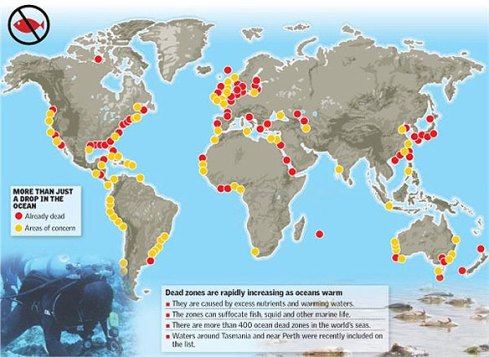| The algae bloom in Lake Erie in 2011 that according to the NOAA was the worst in decades. |
There
are many ways in which politics is involved with dead zones. Dead zones are
considered an environmental issue and issues like this are brought up to certain
politicians whom are expected to take action to try and solve them. Lake Erie
is one of the many areas with this problem. In January of 2015, there was an
article published on the reducing phosphorus levels in the lake. Fertilizer
runoff was labeled as one of the contributors but there were others that were even
more dramatic such as drought and low flows from tributaries and streams.
Because
of the reducing phosphorus levels and other findings, it was suggested that
policymakers have been working on plans in order to combat the dead zones in
Lake Erie. Anna Michalak was the one who led this study and also mentioned that
they should look at the meteorological changes as well as an agricultural
management practice. What she is saying is that there is only so much people
can control with this problem. There are many potential causes to dead zones,
but we cannot control every single one of them. The types of causes that we can
control are ones that include the runoff and what is coming from the runoff
into bodies of water such as Lake Erie. Ones that are not in our control are
natural causes such as increasing water temperature from climate change.
Raj Bejankiwar of the International Joint
Commission, a U.S. - Canadian Agency, said, “Only a few things are in our
control, and how much phosphorus comes into the lake is one of them.” This
Agency made a move in 2014 that called for cutting phosphorus runoff by nearly
half over three to six years. This was an important move since Lake Erie
produces the fish that people eat most. If these dead zones overtake the fish,
then there will be no more fish or other types of seafood for people to eat. That
is a big step in the right direction and more calls like this need to be made
for larger dead zones such as the Baltic Sea and the Gulf of Mexico. Flesher, John. (2015). Lake Erie 'Dead Zones' Influenced by Weather, Scientists Report. HuffPost. Retrieved on May 1, 2015 at http://www.huffingtonpost.com/2015/01/06/lake-erie-dead-zones_n_6424598.html


